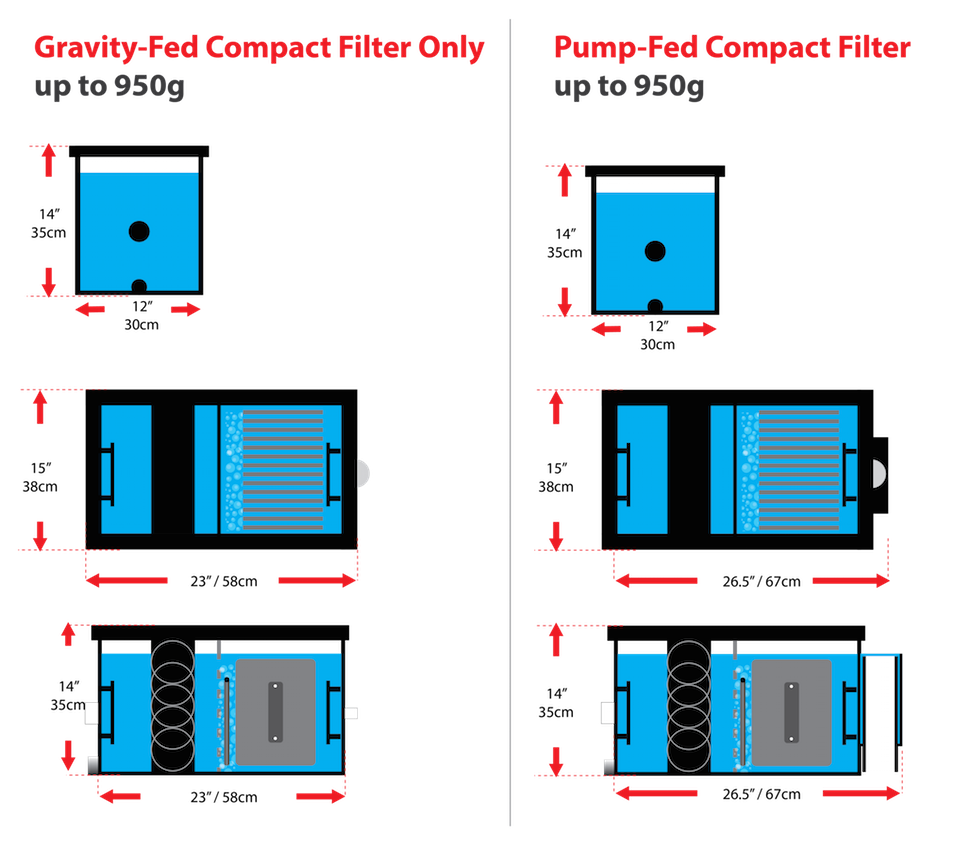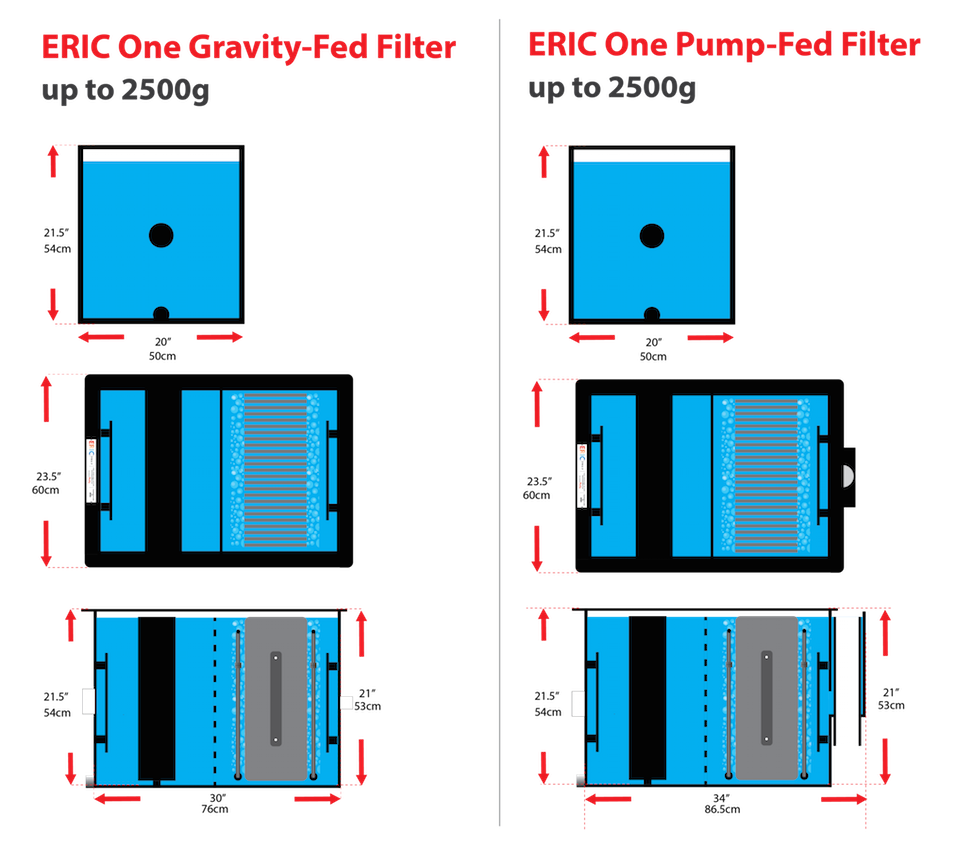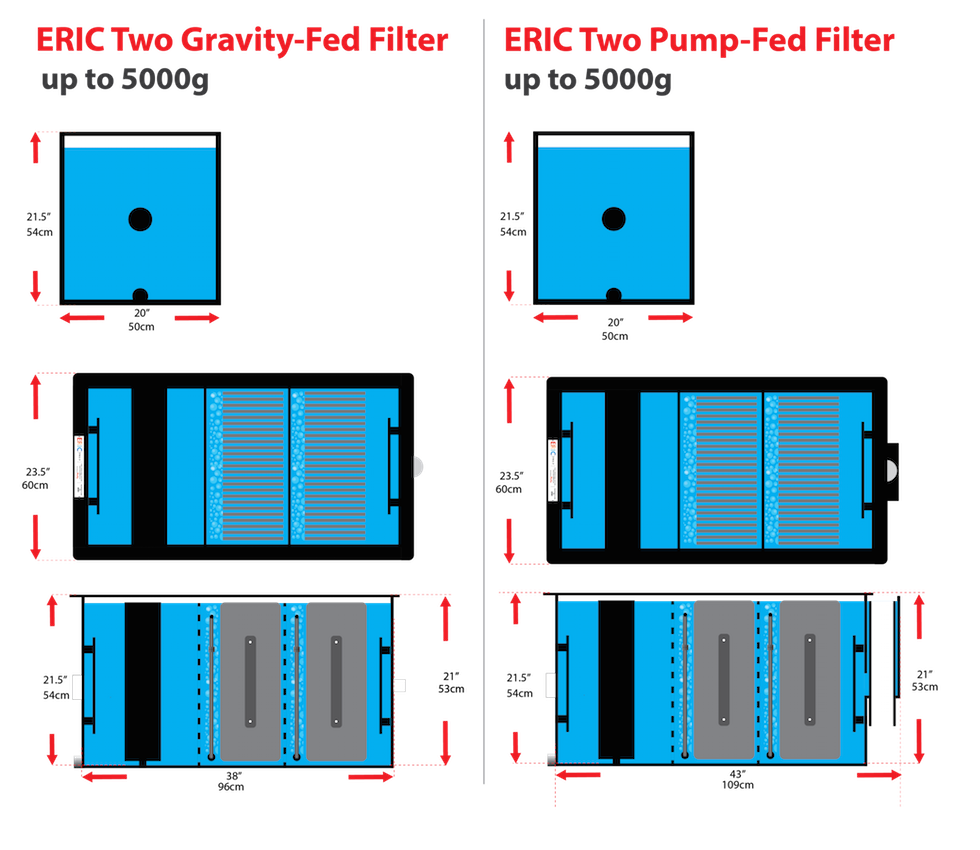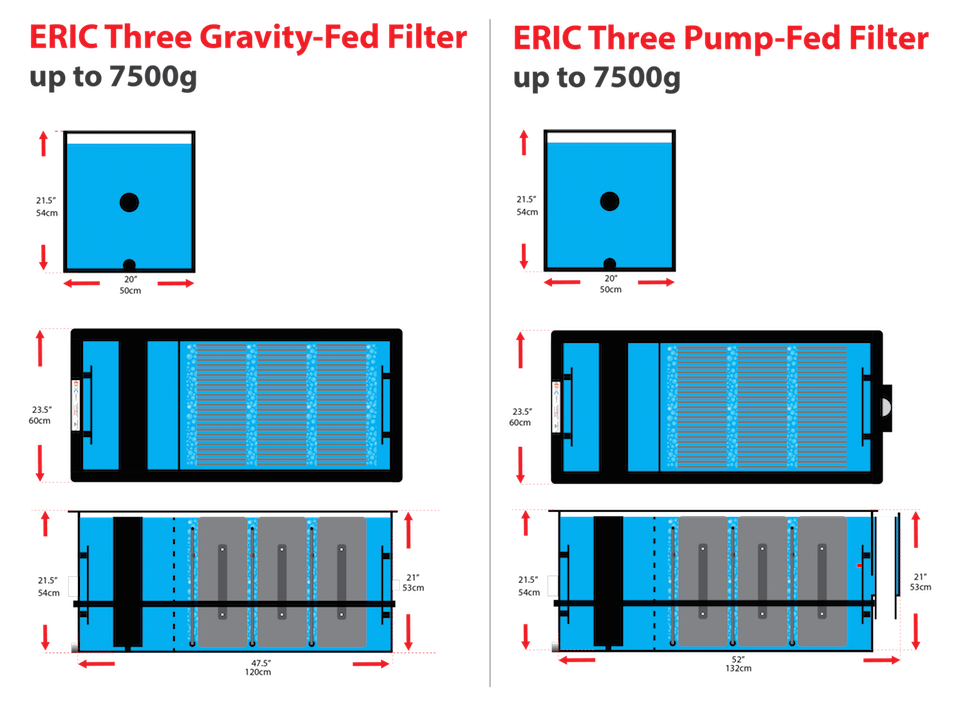I started out in the Koi hobby in 1972 when I was 31 years old.
I concentrated on buying and selling Koi until 2007 when I was 64 years old.
So that’s 35 years being involved in buying and selling Koi and also a host of Koi-related products – from medications, water treatments, Koi foods, Koi nets, Koi books, Koi magazines, pond design and installation, filter design and installation, water pumps, air pumps, U/V systems, pipe work, fittings, valves and many other items that all are considered to be ‘dry goods’.
I even managed to write and publish a couple of successful Koi books along the way.


Also, during that period, I spent seven years of my life in Japan, looking for Koi and trying always to learn more from the masters and staff who produced them.
Many evenings were spent giving lectures to Koi enthusiasts in many parts of the world.
I have also chaired, judged and attended more Koi shows than I can possibly recall.
I’ve loved and enjoyed being a part of the ‘Koi business’ for all these years; it has been a ‘proper job’ for me and every day spent doing this is never exactly the same as the other days – in fact it’s been quite exciting – although I could have done without all the travel involved that was required to carry out my work.
Before 2007 I’d already realised I couldn’t continue with this schedule and if I did I’d probably end up in an early grave. I also knew from experience that many wealthy individuals, who retire with pots of money, relax and stop using their brains. Many of these also meet an early grave.
I didn’t wish to leave the Koi thing behind me but what else could I do at my age?
The only profession I had was Koi related and it seemed at the time that everything that had been needed to be done had already been done!
Save for a couple of very important things – namely hikui & shimi.
By then I had seen many avid and wealthy Koi collectors simply quit the hobby – despite that their ponds, filters and Koi had cost fortunes only some years earlier.
Usually they also paid fortunes for staff to maintain them but still hikui and shimi infested their stocks.
There are still no short or long term ‘cures’ for these problems although many have tried, once they are there – they are there for the duration.
But perhaps there were ways of preventing them happening in the future?
The next year or so was taken up with my in-depth investigations that did keep my brain very active.
There were also enthusiasts and dealers around that were convinced that these problems were just ‘bad luck’ and it all revolved around genetics – so there was nothing anyone could do about it.
What a wonderful excuse this was!
I will refrain from explaining it all again because the reasons for this have been on the Eric website since it was first launched in 2009 – six years ago.
Since then, many users have put my theory to the test, but no new instances of these problems have ever taken place – even though the earlier Koi, complete with hikui & shimi share the same water.
The solution is simple – just make sure your filter system is kept to be squeaky clean on a permanent basis and these problems will never arise in the future.
Of course, with the usual filters that were popular at the time and still are popular today, I knew the thorough cleaning would take up much time and labour to complete. Also the water wasted during the process would be very costly – so because of these two important considerations many systems are left unattended for longer than they should be – and the debris inside them is allowed to build up constantly.
Remember, in order to clean both mechanical and biological sections of these filters thoroughly, the filter should be drained, all internal media should be removed and cleaned and the inside of the filter should be cleaned before the contents are replaced. This also applies to bead filters and sand filters.
Hence followed my ready-made Eric filter systems that still remain to be unique.
I’ll skip re-explaining the ‘water flow patterns’ on my filters and most other filters – because this page on my Eric website has long since been the most popular page overall.
Even if you don’t like to read it, I strongly suggest you do.
Link to water flow patterns.
In October 2009 when I launched my Eric website – I stated they were the finest pond filters that money could buy – of course this produced much laughter from the ranks – but I still say exactly the same thing today after the earlier laughter has all but vanished?
I also state quite clearly that all my filters are true ‘stand-alone’ single box units and work much better if no other ‘add-ons’ are placed either before or after the units.
Although ultra-violet units are required in most ponds, this has nothing to do with mechanical or biological water filtration and I do suggest that the skimmer line powers these units.
Returning to the unique aspects of all my filters, I use ‘horizontal-water’ flow as opposed to ‘up and down’ water flow; horizontal-flow is simply how water chooses to flow naturally.
The filters are narrow and shallow by design, in comparison to the majority of filters on offer; my filters contain very little water – the largest Eric filter is the E2.5, specified for ponds up to 7,500-gallons – and this only contains 88-gallons (400 litres) of water.
When Eric filters are completely discharged to waste and re-filled, the drop in pond level is hardly noticeable; the pump can be started up immediately so the brand new filter is working as normal again.
My filters are fabricated as gravity-fed or pump-fed units; they are single chamber boxes that each contains a mechanical stage first – followed by the biological stage afterwards.
The mechanical stage comprises of a single brush box where the filter brushes are tethered as opposed to being suspended loosely from above.

This also produced some laughter (from many non-users) when it was first launched – but many have put the brush box to the test since then – including myself, and as for trapping and releasing unwanted debris – I know of no other mechanical stage that can compare to it. Of course, this is why the Japanese produced the filter brush in the first place.
Incidentally it’s almost impossible to experience blockages with this even if it’s left untouched for weeks. I have been testing out one standard brush box only on my 17,500-gallon for the past 9 months, please be assured it works.
My eMat cartridge blocks, when provided with horizontal-flow and periodic vertical aeration, do produce and maintain simply perfect biological filtration.


Many of these have been tested out over the years, the surface area of these blocks is colossal, and to show their best performance by water coverage – only a gentle flow rate through the blocks is recommended. Coincidentally this also reduces running costs.
I do not simply write texts and show photos of my filters. For the past three years I have used them exclusively on my own ponds with my own Koi in my own garden.
My own Eric filters have been fabricated in clear PVCu so that I can see easily what is going on inside them – plus I can demonstrate the running operation and the quick discharge procedures to other enthusiasts.
On my indoor quarantine/treatment/isolation pond of 550-gallons, I’m using a pump-fed Compact filter with a flow rate of 350gph.


Last winter saw the same pond and same filter plus 29 large Koi that were kept there and fed for six months before placing them into my large pond this June. I specify that the Compact filter will handle water volumes up to 950-gallons and this is via feedback reports from owners. Right now until next April I’m using the Compact filter to grow 4” – 6” Koi at a water temperature of 24C.
On my large, outdoor pond of 17,000-gallons I’m using a gravity-fed E3 filter for the past two years – although I do specify that this filter will only handle water volumes up to 7,500-gallons.


So from the smallest model to the largest model, I have been personally monitoring both of these on a daily basis for some time now. This daily observance allows me to make modifications and improvements at times when I see they are required.
Most will know that my filters are hand-fabricated to order and that I do not carry any stocks of them as such. Furthermore they cannot be seen at Koi outlets.
To explain this in greater depth, a mould does not govern my filters – but moulds govern many other filters. The advantages of filters produced by moulds is that they can be produced far more cheaply than my hand-made filters – but no further improvements required can be made to them in the following years – unless a brand new mould is made – and that IS expensive!
My filters can be fabricated to suit a customer’s exact requirement at no extra charge. If ‘customer A’ needs a slightly narrower or shorter box – this can be done easily. If ‘customer B’ needs inlets, outlets and drainage points in different positions and sizes – this can be done easily. If ‘customer C’ needs a shallower or deeper box, this also can be done.
The simple reason my filters cannot be bought at Koi outlets is that Koi outlets generally need around 100% profit on cost or they will refuse to stock them.
Suggest you take my word for this because I have had my own professional Koi trade and retail business for 30 years.
I can sell a Compact filter direct to a customer for around £450.00, if a Koi outlet had the same filter, it would have to be offered for sale at £900.00!
Of course, many Koi outlets do continue to stock and sell filters from other suppliers.
As a result, the manufacturer and retailer are both happy, but the buyer is being charged twice the price!
This is why I choose to sell my filters directly to the end users.
I have no concerns as to what price other filter manufacturers sell their filters for and usually the end buyers select the cheapest ones on the market initially – because they really do believe that ‘a filter’ is ‘a filter’ is ‘a filter’.
Many of these cheaper ones will soon be found advertised far more cheaply on eBay when the owners have finally discovered that a filter is ‘not always’ a filter is ‘not always’ a filter is ‘not always’ a filter.
I don’t think anyone will have much luck in finding second-hand Eric filters for sale on eBay?
Again, through ‘living with my filters’ on a daily basis – they have all been recently updated to produce a complete new range.
As a result –
- Steel support frames are no longer required – my filters are now much lighter to handle and cheaper to transport.
- All filters are supplied with lids.
- Standpipes are a thing of the past.
- All bases are now perfectly flat.
- All biological areas have aerated bases.
- There is no longer an extra charge for pump-fed units over gravity-fed units.
Now for the bad news – as a result of all this, my prices have had to increase!
The new range comprises of four models and each one can be ordered as gravity-fed or pump-fed.
(A few words of explanation beforehand regarding the E1 filter, the E2 filter, the E3 filter and the end costs. All of these filters have identical widths and depths – they also have identical brush boxes. However they all vary in length and vary in the number of eMat cartridge blocks placed inside them.
One would think that the E1 would be significantly cheaper than the E2 or E3 but that’s not the case, there are slight cost reductions in the materials used but the same amount of time, labour and the same number of welds required is exactly the same.
To give a couple of examples – an E3 filter (the largest one) costs £1,500.00 and if there are no problems with length, I can supply it with one eMat cartridge block only and this would drop the end price to £1,200.00 – exactly the same as the E2 filter. The E2 filter costs £1,200.00 and contains two eMat cartridge blocks and again, if there are no problems with the length, this can be supplied with one cartridge block only for £1,050.00 and that’s only £100.00 more than the cost of the E1 filter.
This spare empty length in the filters comes in very handy if one wishes to increase the pond volume or stock the pond with far higher levels of Koi because new eMat blocks can be purchased and added to the biological stage at a later date).
The Compact Filter.

This shows the pump-fed version and contains one tiny brush box and one tiny eMat cartridge block.
Here is the gravity-fed version of the Compact filter.
Price – £450.00 plus VAT.

This tiny filter will handle water volumes up to 950-gallons (4,300 litres).
The Eric One Filter.

Contains one large brush box and one standard eMat cartridge block.
This will handle water volumes of up to 2,500-gallons (11,300 litres).
Price – £950.00 plus VAT.
The Eric Two Filter.
Contains one large brush box and two standard eMat cartridge blocks.

This will handle water volumes of up to 5,000-gallons (22,500 litres).
Price – £1,200.00 plus VAT.
The Eric Three Filter.
Contains one large brush box and three standard eMat cartridge blocks.

This will handle water volumes of up to 7,500-gallons (34,000 litres).
Price – £1,500.00 plus VAT.
(All filters are offered as standard in black polypropylene and rubber boots will be required to get the inlets and outlets connected to PVCu pipelines and ball valves etc. Many will already own these fittings or be able to get them from a local supplier. If not, we have them in stock at very keen prices.
For those wishing to observe the internal workings of my filters, clear PVCu versions of all my filters are available for an extra 10% on top of the above prices).
Accessories & Spares.
Spare Compact brush box – £60.00 plus VAT.
Spare Compact eMat block – £70.00 plus VAT.
Spare brush box for E1, E2 & E3 models – £150.00 plus VAT.
Spare eMat block for E1, E2 & E3 models – £170.00 plus VAT.
3/8” flap valve assembly to prevent water flooding your air pump – £9.50 plus VAT.
For earlier models with aeration from 3/8” pipelines, large spare air bars are £7.50 plus VAT each and those for the Compact filter are £4.50 plus VAT each.
Please note, these prices do not include delivery but you are welcome to collect them direct from our finishing unit near St. Helens, Merseyside.
Thanks for reading, Waddy.
